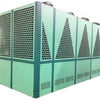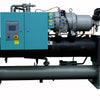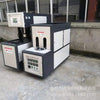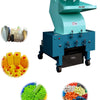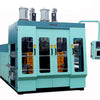Industrial Water-Cooled Chillers: Engineering Precision for Thermal Management in Modern Manufacturing Abstract
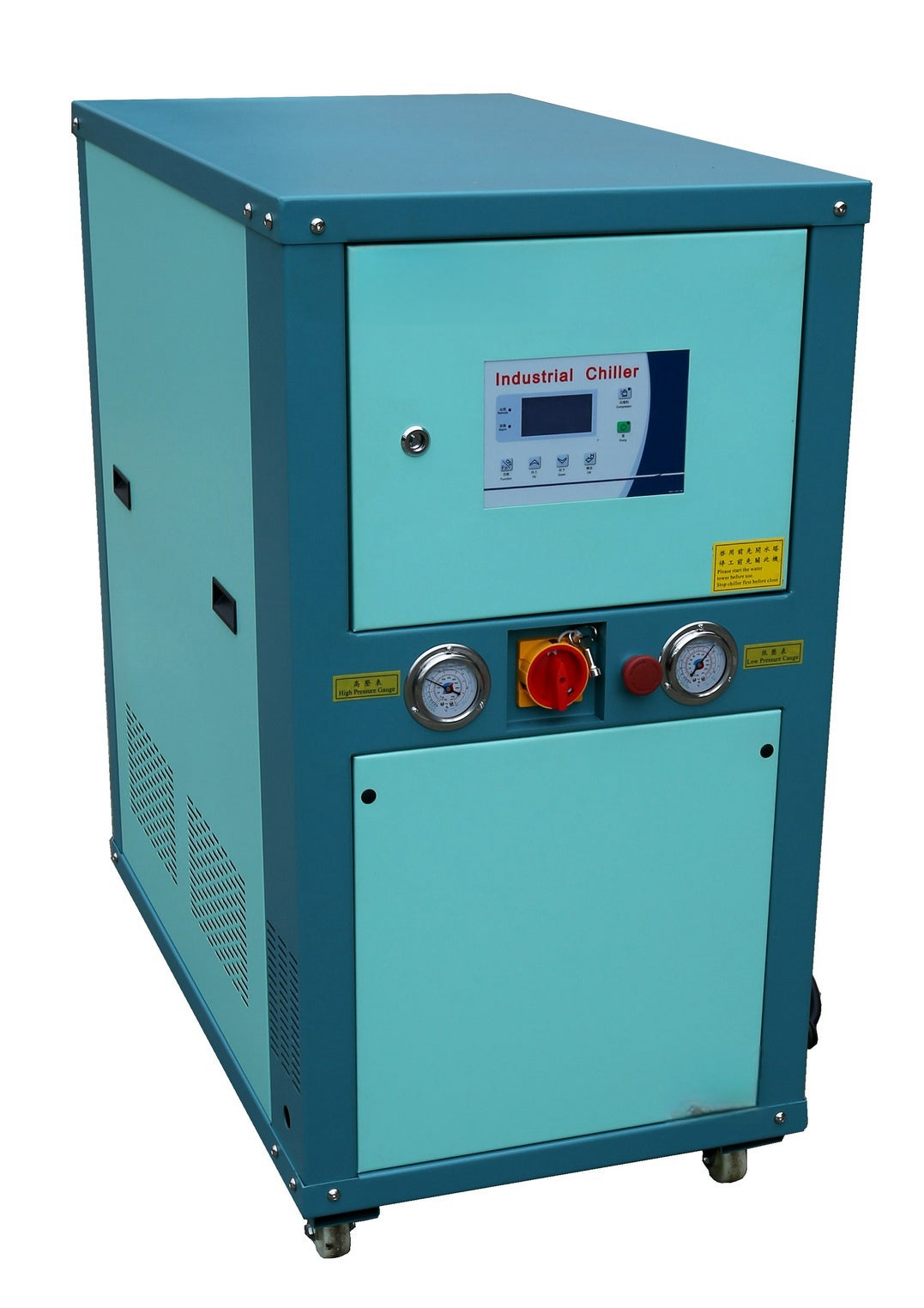
1. Introduction: The Imperative of Process Cooling
In modern industrial operations—from injection molding and laser cutting to chemical reactors and data centers—maintaining precise temperature control is not merely a preference but a necessity. Thermal fluctuations can lead to product defects, equipment failure, reduced throughput, and safety hazards. Industrial chillers serve as the central nervous system for thermal regulation, and among them, water-cooled variants are preferred for large-scale, continuous, and high-heat-load applications due to their inherent thermodynamic advantages.
—
2. Operating Principle and Thermodynamic Cycle
Water-cooled chillers operate on the vapor-compression refrigeration cycle, comprising four primary components:
- Compressor: Elevates the pressure and temperature of the refrigerant gas, preparing it for heat rejection.
- Water-Cooled Condenser: Unlike air-cooled units that reject heat to ambient air via fans, water-cooled condensers transfer heat to a closed-loop water system, which then circulates to an external cooling tower. This method is significantly more efficient, especially in hot climates.
- Expansion Valve: Reduces the pressure of the liquid refrigerant, causing its temperature to plummet before entering the evaporator.
- Evaporator: Absorbs heat from the process fluid (typically water or glycol solution), cooling it for recirculation through industrial equipment. The refrigerant evaporates in this stage, returning to the compressor to restart the cycle.
This closed-loop process ensures consistent and controllable cooling output regardless of external environmental conditions.
—
3. Comparative Advantages Over Air-Cooled Systems
Water-cooled chillers offer several compelling benefits:
- Higher Energy Efficiency: Water’s specific heat capacity is far greater than air’s, enabling more effective heat transfer with less energy input. This translates to lower kW/ton ratings and reduced operational costs.
- Greater Cooling Capacity: Suitable for applications requiring hundreds or thousands of tons of cooling, where air-cooled units become impractical.
- Quiet Operation: Without large condenser fans, water-cooled chillers generate significantly less noise, making them ideal for indoor or noise-sensitive installations.
- Stable Performance: Less susceptible to ambient temperature swings, ensuring consistent cooling performance year-round.
- Flexible Installation: The chiller unit can be located indoors or in confined spaces, while the heat rejection (cooling tower) is placed outdoors, optimizing facility layout.
—
4. Key Industrial Applications
Water-cooled chillers are mission-critical across diverse sectors:
- Plastics & Rubber: Cooling molds in injection, blow, and extrusion molding to ensure dimensional accuracy and cycle time efficiency.
- Metalworking & Laser Processing: Cooling CNC spindles, laser heads, and cutting fluids to prevent thermal deformation and maintain beam precision.
- Chemical & Pharmaceutical: Controlling reaction temperatures in reactors and crystallizers to ensure product purity and process safety.
- Food & Beverage: Rapid cooling of processing lines, pasteurizers, and storage environments to meet hygiene and shelf-life requirements.
- Data Centers & HVAC: Supporting large-scale building cooling and server rack thermal management where reliability is non-negotiable.
—
5. System Design Considerations and Emerging Trends
Designing an effective water-cooled chiller system requires attention to:
- Cooling Tower Sizing and Water Treatment: To prevent scaling, corrosion, and biological growth in the condenser loop.
- Pump and Piping Configuration: Ensuring adequate flow rates and pressure drops across the entire chilled water and condenser water circuits.
- Control Systems: Integration with PLCs and SCADA for remote monitoring, predictive maintenance, and energy optimization.
Emerging trends include:
- Variable Speed Drives (VSDs): On compressors and pumps to modulate capacity and reduce energy consumption during partial loads.
- Eco-Friendly Refrigerants: Transition to low-GWP (Global Warming Potential) refrigerants in compliance with environmental regulations.
- IoT and AI Integration: Smart chillers that self-optimize performance, predict failures, and integrate with factory-wide energy management systems.
—
6. Conclusion
Industrial water-cooled chillers are more than just cooling equipment—they are engineered systems that enable precision, productivity, and sustainability in modern manufacturing. Their superior efficiency, scalability, and reliability make them the preferred choice for high-demand industrial applications. As industries continue to prioritize energy efficiency and digital transformation, water-cooled chiller technology will evolve further, incorporating smarter controls, greener refrigerants, and tighter integration with Industry 4.0 ecosystems. Understanding their design, operation, and application is essential for engineers and facility managers aiming to optimize thermal performance in the industrial landscape.
-
Đăng trong
Industrial chiller

